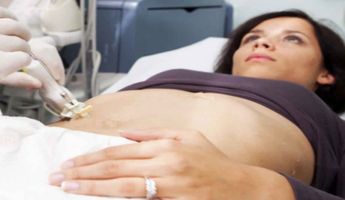Liver Biopsy in Barbados
Search and Compare the Best Clinics and Doctors at the Lowest Prices for Liver Biopsy in Barbados

Find the best clinics for Liver Biopsy in Barbados
No clinics available
Morocco offers the best prices Worldwide
Price: $ 50

- Home
- Barbados
WHY US?
At Medijump, we're making medical easy. You can search, compare, discuss, and book your medical all in one place. We open the door to the best medical providers worldwide, saving you time and energy along the way, and it's all for FREE, no hidden fees, and no price markups guaranteed. So what are you waiting for?

Free

Best Price

Widest Selection

Risk-Free
What you need to know about Liver Biopsy in Barbados

A liver biopsy is a medical procedure performed to collect a small piece of liver tissue, so it can be examined closely under a microscope for signs of disease or damage. This procedure is usually carried out to detect the presence of abnormal cells in the liver, such as cancer cells. Your doctor may suggest a liver biopsy if the result of your blood tests or imaging studies shows that you might have a problem in your liver. Although biopsies are usually associated with cancer, it does not necessarily mean that you have cancer if your doctor recommends this test.
A liver biopsy is most often used to:
-
Identify the cause of unexplained jaundice (yellowing of the skin), persistent abnormal liver blood tests (liver enzymes), a liver abnormality found on CT scan, ultrasound, or nuclear scan, as well as unexplained enlargement of the liver
-
Determine the severity of the liver disease
-
Grade and stage hepatitis B and C
-
Monitor the liver after a liver transplant
-
Help develop the best treatment for liver damage or disease.
What does the Procedure Involve?
Laparoscopic biopsy
Laparoscopic biopsy uses a laparoscope, which is a tube-like instrument with a tiny camera attached to it, to collect the sample.
Before the laparoscopic biopsy, you will be given a general anesthetic. Your doctor will create several tiny incisions in your abdomen. The laparoscope and special surgical tools are inserted through these incisions. The camera within the laparoscope projects images on a monitor. Your doctor uses these images to guide the surgical tools to your liver to take some tissue samples. When the samples are taken, the tools are removed and the incisions are closed with stitches.
Transjugular biopsy
To start the procedure, a small numbing medication is applied to one side of your neck. Your doctor will then create a small incision at the numbed area and then inserts a thin, flexible tube through the incision into your jugular vein. The tube is then guided through the jugular vein and into the hepatic vein (the large vein in your liver). Once the tube reaches your hepatic vein, your doctor will inject a contrast dye into the tube and creates a series of X-ray images. The contrast dye will show up in the vein, which enables your doctor to clearly see the hepatic vein. Afterward, a biopsy needle is inserted through the tube to take the liver sample.
Percutaneous biopsy
Percutaneous biopsy, also known as a needle biopsy, is the most common type of liver biopsy. It involves the use of a thin needle through your abdomen and into the liver. To start the procedure, your doctor will tap your abdomen or use ultrasound images to locate your liver. Ultrasound is sometimes used to guide the needle into the liver. Your doctor will apply a numbing medication and then creates an incision near the bottom of your ribcage. The needle is then inserted through the incision and your doctor will remove a small tissue sample.
How Long Should I Stay in Barbados?
You can leave the hospital on the same day as the procedure. However, since it takes around a week until the result of your biopsy comes back from the pathology lab, plan to stay in Barbados for about 7 days. Once the result is ready, you will have to attend a follow-up appointment to discuss the results with your doctor. If everything is fine, you will be allowed to travel home afterward.
What's the Recovery Time?
You need to take it easy and rest for at least 1 day. You should be able to resume your normal activities after a few days. However, avoid strenuous activities and heavy lifting for a week following your liver biopsy.
What About Aftercare?
Your doctor will give you detailed aftercare instructions that you need to follow. In general, you need to avoid taking aspirin or products that contain aspirin for a week. Your doctor will prescribe pain medication to help with your discomfort, make sure to take them as directed.
What's the Success Rate?
A liver biopsy is a safe procedure with high success and accuracy rates. Although it is safe, there are still some possible risks and side effects that you will need to be aware of. These include:
-
Bleeding
-
Pain
-
Infection
-
Injury to a nearby organ.
A transjugular biopsy carries very rare risks of hematoma in the neck, puncture of the lung, temporary voice problems, and temporary problems with the facial nerves.
Are there Alternatives to Liver Biopsy?
In some cases, your doctor may be able to make a diagnosis of liver disease based on physical examination, medical history, and blood testing. Doctors may also use imaging techniques as an alternative to liver biopsy. The simplest imaging technique that’s used is elastography (mostly known as FibroScan), which is similar to an ultrasound and can measure the stiffness of a liver.
What Should You Expect Before and After the Procedure
Before a liver biopsy, you may experience unexplained symptoms and your doctor may not be able to make an accurate diagnosis of your problem. After the procedure, your doctor should be able to make a diagnosis and know for sure the condition of your liver. The results will allow you and your doctor to create a treatment plan.
Whilst the information presented here has been accurately sourced and verified by a medical professional for its accuracy, it is still advised to consult with your doctor before pursuing a medical treatment at one of the listed medical providers
No Time?
Tell us what you're looking for and we'll reachout to the top clinics all at once
Enquire Now

Popular Procedures in Barbados
Prices Start From $35,013

Prices Start From $22,731

Prices Start From $39

Recommended Medical Centers in Barbados for procedures similar to Liver Biopsy

- Interpreter services
- Translation service
- Religious facilities
- Medical records transfer
- Medical travel insurance
- Health insurance coordination
- TV in the room
- Safe in the room
- Phone in the room
- Private rooms for patients available
Liver Biopsy in and around Barbados
Introduction
Barbados is an island country located in the Caribbean region of North America. This vibrant island nation boasts an abundance of astounding natural beauty, beautiful weather, smashing nightlife, beautiful architecture, and welcoming people. Beyond its white sand beaches and dazzling turquoise bays, Barbados is also an emerging medical tourism destination. It is known as a leading destination for IVF, rehabilitation, and a wide range of surgical and non-surgical treatments. Hospitals and clinics in the country are equipped with modern technology and high-quality services. The doctors and specialists are highly-trained and international patients can enjoy the country’s beauty and tranquility, while undergoing a medical procedure and holistic therapy at the spa. This allows patients to be at their optimum relaxation when they undergo medical treatment, making the recovery period easier and the success rate higher.
Popular Cities and Regions in Barbados
Bridgetown, Barbados’ UNESCO World Heritage-listed capital, is filled with old colonial architecture and vibrant culture. Visitors can go to the beautifully restored Barbados Synagogue, learn more about cricket in the Cricket Legends of Barbados, explore the history of the country in Barbados Museum, and admire the beauty of the neo-Gothic parliament. Those who want to experience the tranquil beaches and the calm Caribbean Sea should visit Holetown. Located 13.5 kilometers from Bridgetown, this beautiful city offers the perfect blend of history with modern-day living. It is lined with world-famous restaurants and museums. The main draw of the city is its beaches, and most tourists come to witness the remarkable sea turtles in their natural habitat, try out paddle boarding, or see the man-made coral reef. Aside from Holetown and Bridgetown, other popular cities are Bathsheba, Oistins. And Speightstown.
Transport in Barbados
International visitors will arrive at Grantley Adams International Airport as the airport serves the US, Canada, Central America, and Europe. A great way to travel around the country is by bus, which is the most affordable mode of transportation. Visitors who need a more flexible option can opt for a taxi. Taxis in the country are not metered, but the fares are regulated by the government based on the distance traveled and the cost is reasonably priced.
Visas in Barbados
Barbados allows citizens of most countries, including Australia, the US, all EU countries, and the UAE, to visit and stay without a visa for up to 180 days. Nationals of other countries, such as Libya and Egypt, need a visa before arrival. All visitors must have a valid passport for at least 6 months.
Weather in Barbados
Located in the tropics, Barbados experience hot sunny days and tropical rain showers during the summer months (mid-April to November). The cooler season (December to mid-April) has dry and less humid weather, making it the best time to visit the country.
Additional Info
- Local Currency: Barbadian dollar (BBD) is the official currency in Barbados. 1 USD will get you approx. 2 BBD.
- Money & Payments: While you still need some Barbadian dollars on hand, some businesses will accept US dollars and major credit cards. Tip 10% to 15% for taxis and in restaurants. Tip porters 2 BBD per bag and tip cleaning staff at your discretion.
- Local Language: English is the official language of Barbados.
- Local Culture and Religion: Christian is the predominant religion. Religious freedom is established by law, and other religions, such as Islam, Hinduism, Buddhism, and Judaism, are present.
- Public holidays: Some of the public holidays celebrated in Barbados are New Year’s Day, Errol Barrow Day, National Heroes’ Day, Kadooment Day, and Independence Day.
Popular Searches
- Plastic Surgery in Thailand
- Dental Implants in Thailand
- Hair Transplant in Thailand
- Breast Augmentation Thailand
- Gastric Sleeve in Thailand
- Gender Reassignment Surgery in Thailand
- Laser Hair Removal in Bangkok
- Botox in Bangkok
- Dermatology in Bangkok
- Breast Augmentation in Bangkok
- Coolsculpting in Bangkok
- Veneers in Turkey
- Hair Transplant in Turkey
- Rhinoplasty in Turkey
- Stem Cell Therapy in Mexico
- Rhinoplasty in Mexico
- Liposuction in Mexico
- Coolsculpting in Tijuana
- Rhinoplasty in Korea
- Scar Removal in Korea
- Gastric Sleeve in Turkey
- Bone Marrow Transplant in India
- Invisalign in Malaysia
- Plastic Surgery in the Dominican Republic
- Tummy Tuck in the Dominican Republic
- Plastic and Cosmetic Surgery in Poland
- Rhinoplasty in Poland
- Hair Implant in Poland
- Dental Implants in Poland
- IVF in Turkey